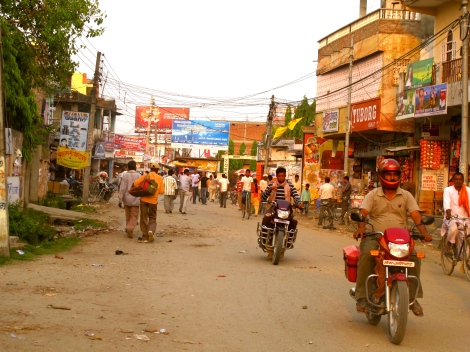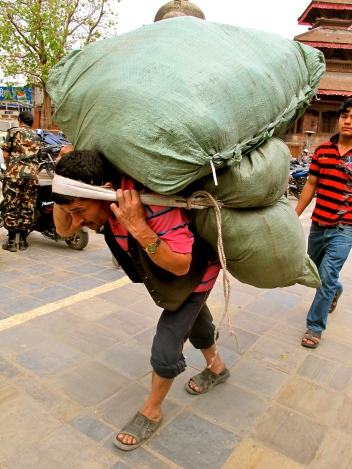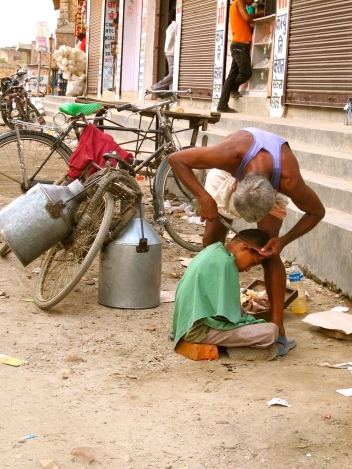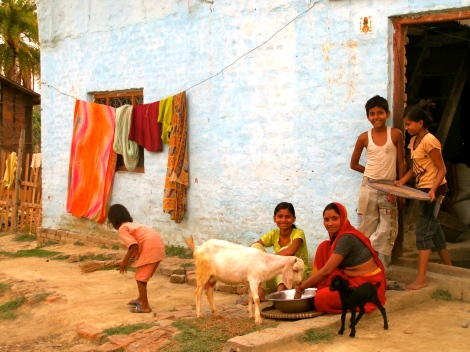An Introduction to the Nepalese Culture.
So far, so good for a culture shock! Nevertheless, despite being literally overwhelmed by this strange and colourful new culture, all shocking experiences got compensated by the stunningly warmth of the Nepalese people!
When I landed Friday at noon at Kathmandu airport, Basu (my host Sulo’s driver) was already expecting me; that’s when the entire chaos began! Going somewhere by car in Nepal is not at all comparable to any sort of western mobility. The average speed level is about 30 km/h (also on highways), and the use of the horn also differentiates a little. One’s horn is in steady use, for the mere expression of one’s existence, respectively to indicate: “Hey, here I come!” as well as: “Now it’s my go!!”, or one honks just for fun. On Kathmandu’s roads you’ll find motorbikes and scooters (ca. 70%), funny looking cars, extremely colourful buses, and Tuktuks. A Tuktuk is a three-wheeled mini-transporter in the size of a compact car. Tuktuks are Nepal’s form of public transportation and “have the capacity” (arguably) of transporting about 12 persons at a time.
Furthermore, the roads are basically three times as crowded as we are used to, which leads to a permanent traffic congestion. Traffic lights? – They do exist however, not in use; nevertheless, at really tricky spots policemen “handle” the situation.
Finally, we reached Sulo’s residence, a Nepalese mansion of the royal family, which she and her husband Richi inherited due to their marriage. However, a Nepalese palace has nothing to do with any sort of Western comfort. At large, I was entering a whole new world, previously unknown to me in its entire existence.
There are twelve hours of power a day, three hours of power from time to time. Theoretically, there is a specific power schedule existent, however, in practice, it definitely is not a reliable source! If power is gone, work flows continue in the dark, or the extremely loud emergency generator (if existent and working) starts running. There is no constant water supply system, so the rooftops are stocked with water tanks, at least in the richer areas, which have to be reloaded three times a week. One can only dream about a garbage collection; rubbish is simply collected and burned at the edge of the road. Alternatively, the rivers serve as dumping ground, which really contributes to the riversides’ adornment. So far, so good for a culture shock!
Nevertheless, despite being literally overwhelmed by this strange and colourful new culture, all shocking experiences got compensated by the stunningly warmth of the Nepalese people!












Your pictures and words captured the essence of what parts of Kathmandu are – the tip of the iceberg at least :). I look forward to more posts and pics.